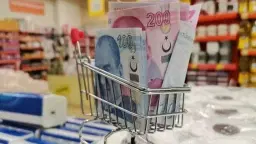Many economists argue that the problems facing Greece can no longer be solved via fiscal discipline and foreign credits. The underlying justification of such views is that even if the announced plan is implemented, Greece's economy will contract in 2010 and therefore the ratio of the debt to the national income will increase further. Therefore, economists argue that the debt of Greece will eventually be restructured.
The economy of the country has to grow to minimize this problem. In a milieu where domestic demand contracts, Greece has to export more in order to put the economy back on track. In the short term there are two ways to achieve this. First is to sign deals to reduce costs; for instance to cut wages. But there is no sense in doing this for Greece, let alone its political feasibility or the sense of justice. Because in that case the real value of the debt will increase further and Greece will have to use a higher proportion of tax revenues to repay the debt. In short, the problem will intensify if nothing else. The second way to achieve this is to increase exports by cutting down the real value of the domestic currency. However the country is in the Euro zone; since it does not have monetary policy independence it cannot devaluate the domestic currency.
Taking departure from the debates about the Greek crisis, the question to what extent the changes in the real value of the lira worked for the benefit of Turkey comes to the fore. Of course we need to conduct a comprehensive and technical analysis to answer this question. But addressing the issue first within a broad framework will make no harm. That of the day before had raised seeds of suspicion in my mind:
In the case of the 2001 crisis, until the second shock created by the disease of PM Mr. Ecevit and the resultant possibility of early elections GDP and real exchange rate moved together in the same direction. This was also the case for the global crisis until today. To put it differently, in the case of the both crisis, GDP decreased in periods were the lira depreciated in real terms. The commentary before also said: "It appears as if the real value of the lira did not play a major role in export and GDP movements. But attention: I did not say it did not play any role. I argue that it did not play a major role."
Now it is time to examine the movements in export volume - one of the important indicators that translate the changes in real exchange rate into GDP figures - together with the real exchange rate data. Below are two figures: first shows the movements after the 2001 crisis and second shows those after the 2008 crisis. I will not explain how the figures are formed again and again, you can check the remarks in yesterday's commentary, for instance. Here exports refer to exportation of real goods and services as included in the GDP accounts. The amount covers tourism revenues as well.
I have to note at this point that as evident from the last crisis, real value of the lira is not the only determinant of exports. Purchasing powers of the residents of the importer countries are also as important as the real exchange rate. But the figures below neglect this and compare only real exchange rate with exports.
The results: there is not significant correlation between exports and the real value of the lira. For instance, in the case of the 2001 crisis exports decreased between the second and the fourth quarter of 2001(between Q2 and Q4 in the horizontal axis). On the other hand, 2001 was the year where Turkish lira depreciated the most. Similarly, it is not much possible to explain the export movements during the global crisis on the basis of the real value of the lira. Despite what would be expected, exports increase as the lira appreciates in real terms.
I want to repeat: the below analysis is quite insufficient in reaching to "great" conclusions. First, as I already mentioned, there are a number of other variables that affect the level of exports and the graphical analysis before neglects those indicators. Second, the correlation between exports and real exchange rate does not have to be simultaneous. Exports might increase for a while after the real depreciation of the currency. Anyway, what really matters is the actual developments we witness. And the figures below help in presenting the actuality.

This commentary was published in Radikal daily on 17.05.2010





